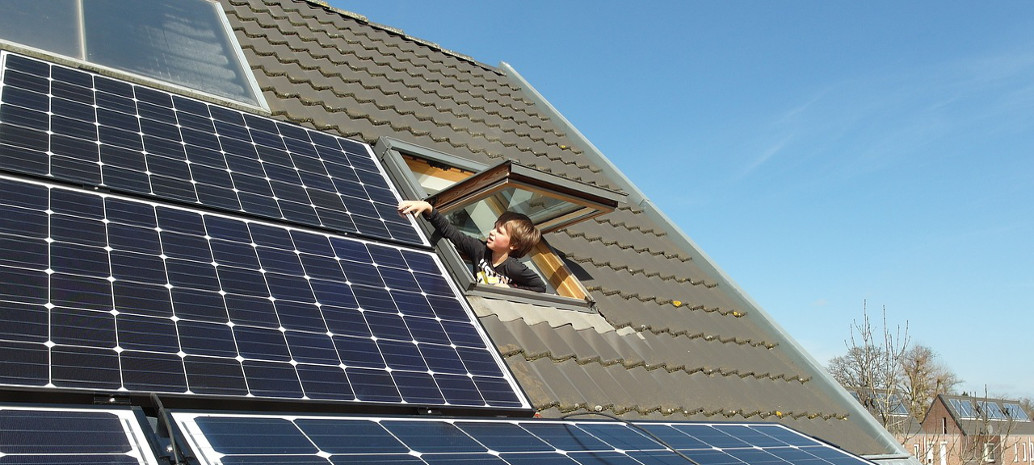As we transition away from natural gas and other fossil fuels, we can – and will – make better use of renewable energy, storing it as electricity to provide space heating, hot water, and power for every socket and appliance in the home. This will then offset the power needed for the inevitable EV parked outside and in need of charging.
Using a battery energy storage system (BESS) combined with renewable technology and connected to the grid enables a home to store excess clean energy either for its own use or for selling back to the grid. The system can then recharge from the grid automatically during off-peak hours, capitalizing on cheaper tariffs. This setup creates a more flexible energy system, increasing the possibilities for renewable energy and helping to decarbonize the grid.
The most promising thing about this setup is that we already have the technology and skills to make it happen. We have the battery technology, solar panels, electricians (to connect the system to the grid) and we have compliances and standards in place for a smooth, safe integration.
We have a way to go before such a system is widely available and in place but energy storage is being adopted at a very rapid rate. According to the International Energy Agency’s (IEA) Energy Storage Tracking Report (last updated in November 2021) it is expected that installed global energy storage capacity will reach 585GW by 2030. 17GW was reported globally in 2020.
‘Boiler 2.0’ – Future-proofing the technology
BESS is a swiftly evolving technology with a wide range of storage capabilities so what we don’t want is to create a system or components that will become obsolete as the technology advances. As with existing boilers, energy storage products will need to be serviced and maintained in order to extend their lifespan.
Boilers currently last for between 10-15 years before having to be stripped out and replaced, which no one likes to do; it is costly, messy, and wasteful. Another drawback with existing boilers is that, if a home is extended, to accommodate a growing family, for instance, the boiler and/or water tank may need replacing (even if it’s relatively new) to meet increased demand.
The beauty of battery storage is that it is often modular. If demand for power increases, it is possible to just add more batteries without the upheaval and waste of stripping everything out and starting again.
I don’t want to overlook the fact that battery waste is a very serious concern and, as our reliance on energy storage rises, consideration must be given to what will happen to a system or its parts when it no longer has a use in its current state.
As demand for batteries increases, so do the amounts of battery parts that will eventually go to recycling. Aceleron was set up to help the battery industry extract more value before batteries reach the material recovery stage. We bought and took apart a variety of batteries to see how they were built and discovered that most lithium-ion cells were assembled using permanent assembly methods like spot welding and adhesives. This has made recycling a challenge and reuse of viable components uneconomical. From this insight, we developed our own battery assembly technology and technique which provides the same performance as welding and can be disassembled for repair, reuse, and recycling.
Where this technology comes to life from a sustainability point of view, is unlocking reuse and repurposing. This additional extraction of value before recycling is where the technology adds value to the circular economy. We work in a number of countries around the world, where we can build second-life batteries using discarded parts that still have a purpose. These go on to provide power in a variety of ways, for instance for communities that are off-grid or to power fishing boats in Africa.
The bottom line with a circular economy battery such as this is, no part should ever need to go to landfill. They must be designed specifically so that every part will have second, third, fourth (etc) life opportunities.
There are repairable, upgradeable products already available which, with the proper care, updates and maintenance, can last a lifetime. Individual parts can be upgraded as technology advances and the components that need replacing over time can be easily recycled. The service engineer who services the system once a year (just like with existing boilers), can take those parts away, sending them into various recycling channels, ensuring that they are not contributing to a waste problem.
That is not to say, however, that we are in a position (yet) to install energy storage systems that can work independently everywhere, harnessing renewable energy to heat and power a home as well as recharge one, two, or possibly even three EV’s parked outside and power a heat pump. However, energy storage provides the flexibility to capture and use as much renewable energy available as possible from the grid, locally generated sources, or both, to supply our growing energy needs.
Energy storage is also a cleantech force ‘multiplier’; if a property has other clean technology installed, such as heat pumps, the renewable energy stored in the batteries can also be used as a power source for them.
Creating a ‘virtual power plant’
The challenge with renewable energy is that we have no control whatsoever over whether the sun shines or the wind blows. This means that there are times when there is an abundance of clean energy and little or no demand – which is of course where energy storage comes into play.
If as many properties as possible have ‘clean energy buckets’, there is the potential to create a virtual power plant. This distributed network of batteries enables the grid to send excess renewable energy to the various locations during low demand, high generation periods, for later use by the property owner, or to resupply to the grid when demand is high. This ultimately reduces the requirement for fossil fuel by the network.
It also removes the ‘facilities burden’ for utility companies as there is no need for a massive, city-sized energy storage plant. Instead of building an energy storage plant to store around 20,000kWh – 30,000kWh, it can be broken down into small home energy storage systems (approximately 10kWh per home). In markets where the incentive model is right, property owners have even self-invested in energy storage, mitigating the capital and operational expense for the utility company as well.
This will work particularly well for countries where space is at a premium – cities in the UK for instance, where energy demand is high, but utility space is constrained. However, where the home already exists and the boiler space already exists, we are simply repurposing existing space and using it to store new, clean technology.
Energy storage for the urban environment
Of course, not every residential property will have the space or capacity to install an energy storage system for their own use so a more collaborative approach will be needed. In Spain for instance, solar communities are springing up, where groups of people are coming together to share the electricity generated on roofs. A battery-based solution allows everyone to participate.
The first thing we need to address, however, is the cost of these installations. Currently, the installation of a new boiler will cost £1,500 – £2,500 whereas a home energy storage system is likely to cost three to four times as much.
This is where governments need to step in. Just as there used to be financial incentives for installing solar panels 15 years ago, now we need incentives in the form of grants, tax rebates, and cashback schemes. Government incentives are going to be absolutely key to encouraging people to take the plunge.
Governments are more than aware that we have deadlines to hit our net zero goals and the only way for us to meet them is to find a way to store clean energy.
Homeowners also need to understand that there is a longer-term return on investment. Energy storage products with a longer operating life mean that a homeowner will continually reap the benefits over time. Longevity and reliability are how we will make the longer-lasting storage solutions a reality.
It will take a while and there are still several hurdles to overcome before battery storage replaces boilers entirely but when we get there, global carbon emissions will plummet as domestic reliance on natural gas practically disappears.
About the author

Carlton Cummins, CTO and co-founder of clean technology firm Aceleron is an entrepreneur and design engineer creating solutions relevant to the challenges faced by society. Carlton began his career working in the solar space, coordinating over 100 installations in the Caribbean before moving to the UK to pursue a Master's in Business & Sustainability. He is passionate about electric & fuel cell vehicles, has been named one of the top 10 Entrepreneurs of Barbados (having been named explicitly by the Prime Minister in her state address in 2019), was named the Shell Young Entrepreneur of the Year and has been featured on the Forbes 30 Under 30 list.
The views and opinions expressed in this article are the author’s own, and do not necessarily reflect those held by pv magazine.
This content is protected by copyright and may not be reused. If you want to cooperate with us and would like to reuse some of our content, please contact: editors@pv-magazine.com.



We need storage clearly. But the choice is between home, decentralized storage or grid scale storage
Home storage at present means lithium ion batteries that are really expensive and depreciate in value with each charge cycle, after which you as a homeowner have to make that big purchase again.
Also the concept of a virtual power plant networking all these batteries together is a significant engineering problem, which would require standardization.
It seems much easier just to build this storage with several grid scale plants, with sustainable tech like pumped hydro, compressed air, flow batteries, etc.
Decentralized generation works well. Decentralized storage doesn’t have a great story.
V2G will play a large role in this, provided the owners get enough compensation to offset the shortened lifespan of their batteries.
Home owners are paying approximately $1.5 per Kwh of storage The cost of centralized storage is maybe a tenth of that.
I have two questions:
1. How long will it be before battery packs are fully recyclable? It sounds to me like even with the changes you indicate, they will at most be only reusable in a lower value application and then eventually only suitable for a landfill.
2. What is more economical: a home user to spend $5000 on their own battery pack, or to invest this as part of a community or centralized power storage station? My feeling is the latter as this could use cheaper and longer-life battery storage technology.
If government mandates that every new home had solar PV, water heating etc, it could happen soon, fitted during a build won’t raise house cost too much.
Surely the larger priority is instead of asking for (yet more) subsidies, is for legislation that enshrines the right of home owners to sell back their stored energy at market rates. “Behind the meter management” won’t happen unless we legislate for it.
To manage the varying activities in a domestic home of energy make – buy – store – sell, I strongly believe the government should seek to introduce software management tools/apps for domestic users to manage that buy and sell process according to individual priorities – e.g. I need a fully charged EV by 7am, I’m happy to discharge my stored energy at X pence/KWh level etc.